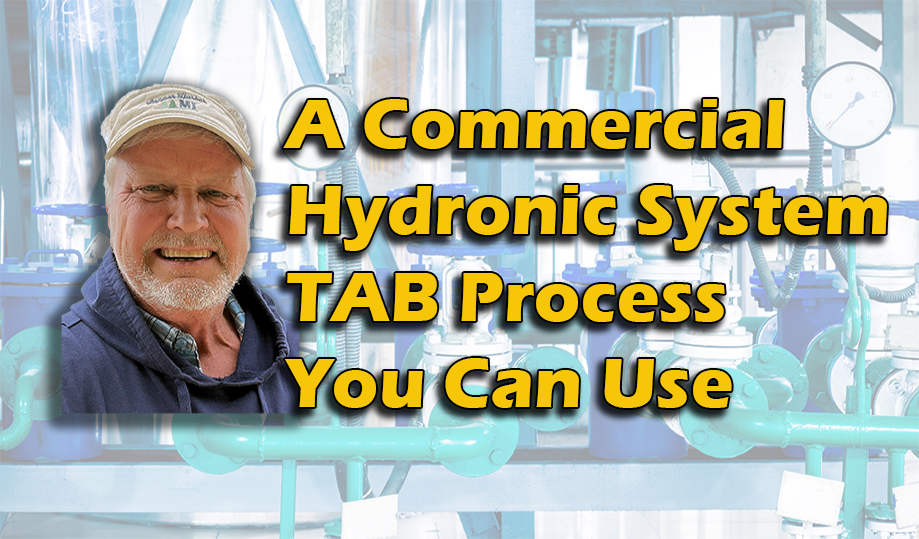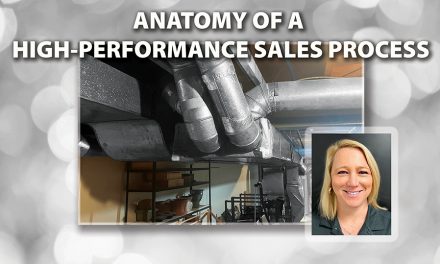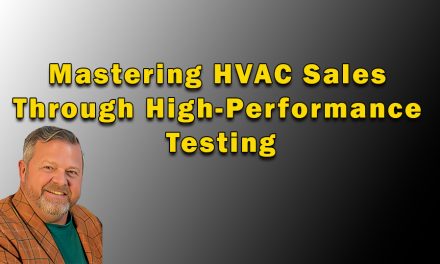Final Testing
Once you’ve balanced the system, you should record the final pump readings in all fields in the Pump Test Report. The readings will include final electrical measurements, pump operating speed (RPM), and operating frequency (HZ) should the pumps have VFDs.
Final pump DP readings enable you to plot that measurement on the manufacturer pump curve to verify the operating flow rate with all control valves open. The pump’s final flow rate and the sum of all the hydronic loads should strongly resemble each other if the system is properly balanced. After completing this task, release all control.
Final Composition of the TAB Report
Once the system is balanced, you must assemble the final TAB report. Type all recorded field data into the specific fields of the TAB report pages. Note any discrepancies identified and/or loads that did not achieve the specified flow rate.
We analyze the reason(s) for the discrepancy in the field and add those notes for possible future corrections.
In our final TAB reports, we include a cover page, an index, certification from our respective TAB entity, and a narrative on our opening page about how and what issues we found along the way with any significant pump and/or system performance deficiencies.
We include a spreadsheet listing our TAB equipment with model and serial numbers and instrument calibration dates. We also include a set of the hydronic drawings with our numbering of the loads that correspond to the hydronic Test Station Report.
Some Final Thoughts
Here are some additional items to consider and common deficiency issues we often find.
- Verify whether the hydronic system is constant volume or variable flow. Most systems designed today are variable flow. You must establish and confirm the system’s final DP operating setpoint with the temperature control contractor.
- Determine if the hydronic system is designed as a direct or reverse return type system. Reverse return systems require fewer hours to balance because of the design characteristics of the system. To achieve the flow specifications, direct return systems may need multiple passes to retest and balance.
- Fixed orifice (CV) balance valves are flow-specific and must be correctly installed. Should a fixed CV balance valve be installed backward to the required flow direction, the DP measurement across the valve will provide an erroneous reading. You’ll need to remove the balance valve and re-install it correctly. Then you’ll need to retest the load and balance it.
- If the pump will not deliver the specified design flow during the initial test, conduct a careful analysis to determine why. Verify that the fine construction screen in the pump diffuser has been removed and does not restrict flow. Only install the coarse final screen and verify it’s clean. I always instruct the piping mechanic to leave the fine construction screen near the pump so we can see that it was removed in their absence.
- You should also confirm that the pump rotation is correct. It’s common for three-phase-powered pumps to operate backward. You must correct this situation.
- When balancing individual loads with a variable CV-type balance valve, the valve’s position indicator must be correctly coupled and aligned to render a correct flow reading with the manufacturer’s slide wheel chart. Sometimes the metal position indicator on the balance valve stem may have been closed to the point that the indicator strips on the valve stem shaft and is not aligned correctly. Sometimes you need to remove the balance valve adjustment knobs and re-set so the position indicator reflects the valve’s percentage open.
There is much more to discuss on this topic. I intended to provide a general overview of the steps to correctly balance a hydronic system and some issues to look out for. Going the extra mile to find out why there is a lack of performance has greatly enhanced our reputation in the industry.
Kevin Heikkila owns Integrity Test and Balance, Inc., of Traverse City, MI. His 21-year-old company specializes in commercial system testing, adjusting, balancing, and commissioning. They conduct air and hydronic measurements on HVAC systems, then adjust flows to achieve optimum performance. You can reach Kevin with any questions about this article at ncilink.com/ContactMe.













Recent Comments